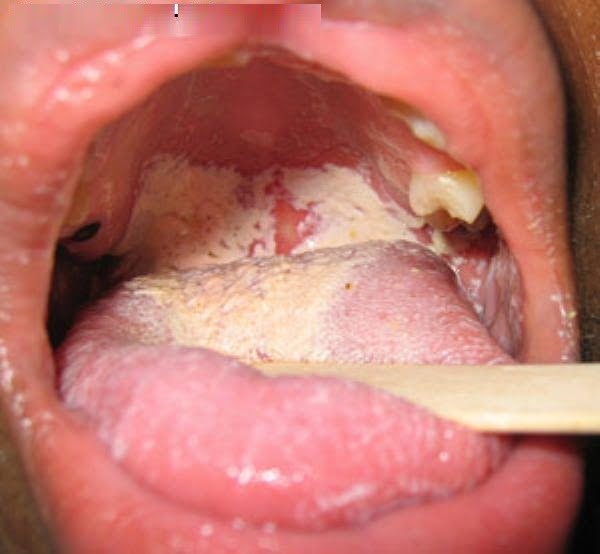Gonorrhea is STD (sexually transmitted disease). This type of disease is caused by infection with the bacterium Neisseria gonorrhoeae. This condition tends to affect warm and moist areas of the body such as
- Female reproductive tract (the fallopian tubes, cervix and uterus)
- Anus
- Vagina
- Throat
- Eyes
- Urethra (the tube that drains urine from the urinary bladder)
This disease passes from person to person through unprotected vaginal, anal or oral sex. People who do not use a condom or people who have many sexual partners are having increased risk of getting gonorrhea. The best protections against the gonorrhea are proper condom usage, monogamy (sex with only one partner) and abstinence. Also behaviors which make the individual more likely to engage in unprotected sex also are increasing the chances of infection. These behaviors are including illegal drug abuse, particularly intravenous drug use and alcohol abuse. [1]
Gonorrhea Symptoms
Symptoms of gonorrhea usually happen within 2 – 14 days after exposure. But there are some people who are infected with gonorrhea but they never develop noticeable symptoms. Also it is important to know that the person who is affected with gonorrhea and who does not have symptoms (which is also called a nonsymptomatic carrier) is still contagious. Some person is more likely to spread the infection to other partners when they do not have noticeable symptoms.
- Symptoms in men: When men are affected by gonorrhea, then they may not develop noticeable symptoms for several weeks. There are some men who never develop symptoms. Usually, gonorrhea begins to show symptoms a week after its transmission. A burning or painful sensation during urination is the first noticeable symptom in men. [2] As this condition progresses, then there can be other symptoms such as
- A persistent sore throat
- Swelling or pain in the testicles
- Swelling or redness at the opening of the penis
- A pus – like discharge (or drip) from the penis (white, yellow, beige or greenish)
- Greater frequency or urgency of urination
This type of infection will stay in the body for a few weeks after the symptoms have been treated. There are rare cases when gonorrhea can continue to cause damage to the body, specifically the testicles and urethra. Also the pain can spread to the rectum.
- Symptoms in women: There are many women who do not develop any overt symptoms of gonorrhea. When females do develop symptoms, then they tend to be mild or similar to other infections which are making them more difficult to identify. Gonorrhea infections can appear much like common bacterial infections or vaginal yeast infection. [3] Here are some symptoms which women have when they are infected with gonorrhea:
- Fever
- Sharp pain in the lower abdomen
- Pain upon engaging in sexual intercourse
- Sore throat
- Heavier periods or spotting
- The need to urinate more frequently
- Pain or burning sensation while urinating
- Discharge from the vagina (watery, creamy or slightly green)
Gonorrhea causes
It is known that gonorrhea comes from a bacterium called Neisseria gonorrhoeae. This disease is spread through sex but a man does not have to ejaculate in order to pass it on to his partner. People can get gonorrhea from any kind of sexual intercourse, including:
- Oral intercourse (both giving and receiving)
- Anal intercourse
- Vaginal intercourse
As it is the case with other germs, you can get the bacterium that causes gonorrhea just if you touch an infected area of the affected person. Also if you come in contact with the anus, mouth, vagina or penis of someone carrying this bacterium, then you can get the gonorrhea. The germs which are causes for gonorrhea cannot live for more than a few seconds outside the body so you cannot get gonorrhea by touching objects like clothes or toilet seats. Also women who have gonorrhea can pass this disease on to their baby during a vaginal delivery [4]. Those babies who are born with C – section cannot get gonorrhea from their mothers. You have a lower risk to get gonorrhea if you are in long – term sexual relationship with one person and he or she does not have other sexual partner [5].
References:
[1] Budkaew J, Chumworathayi B, Pientong C, Ekalaksananan T. Prevalence and factors associated with gonorrhea infection with respect to anatomic distributions among men who have sex with men. PLoS One. 2019;14(4):e0211682.
[2] Fairley CK, Hocking JS, Zhang L, Chow EPF. Frequent transmission of gonorrhea in men who have sex with men. Emerging Infectious Diseases. 2017;23(1):102–4.
[3] Piszczek J, St. Jean R, Khaliq Y. Gonorrhea: Treatment update for an increasingly resistant organism. Canadian Pharmacists Journal. 2015;148(2):82–9.
[4] Eunice Kennedy Shriver Natioal Institute of Child Health and Human Development. How do sexually transmitted diseases and sexually transmitted infections (STDs/STIs) affect pregnancy? 2017. Retrieved from www.nichd.nih.gov/health/topics/stds/conditioninfo/infant
[5] Davis N. STIs may have driven ancient humans to monogamy, study says. 2016. Retrieved from www.theguardian.com/science/2016/apr/12/stis-may-have-driven-ancient-humans-to-monogamy-study-says





